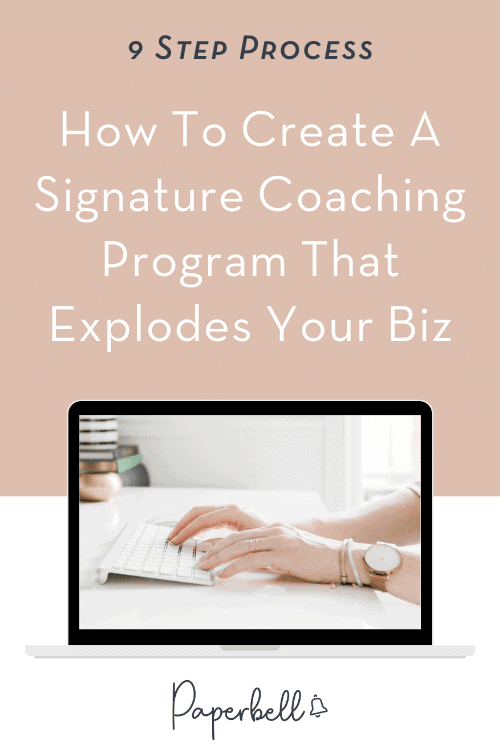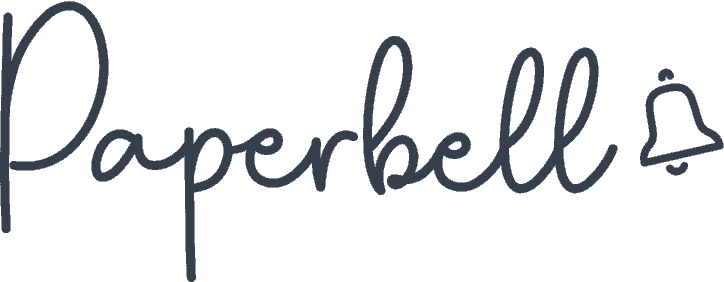Ever wondered why some coaches can charge high fees for their services and still have an endless flow of clients who want to work with them?
The trick lies in creating your own signature coaching program.
And to do that, you need to specialize. The more niched down you are as a coach, the more you’ll attract the exact clientele your business needs.
Here’s how you can create your own unique, signature coaching program.
What is a Signature Coaching Program?
A signature program is your unique, reusable framework that helps clients achieve specific results consistently. Think of it as your special recipe—a proven system that delivers predictable transformations for your clients, time after time.
Instead of starting from scratch with each new client, your signature program gives you a reliable roadmap to follow. The best part? Your clients choose you specifically for the transformation your program promises.
Why Should You Have a Signature Coaching Program?
The best part about creating your own signature coaching program? It’s uniquely yours and impossible to duplicate. Let’s explore why signature programs are game-changers for your coaching business:
Stand Out in a Crowded Market
- Zero true competition – While other coaches may have their own programs, no one solves problems exactly like you do.
- Your unique perspective matters – Even if others try to copy your framework, they can’t replicate your specific expertise. and journey.
- Authentically you – Your personality, experience, and coaching style make your program one-of-a-kind.
Attract Your Dream Clients
- Clear attraction mechanism – You define exactly what problem you solve and how you solve it.
- Self-selecting clients – People who resonate with your approach will be drawn to you.
- Natural client filtering – You’ll avoid working with indecisive clients or those who aren’t the right fit.
- Better client experience – Clients know exactly what transformation to expect.
Run a More Efficient Coaching Business
- Deliver results faster – Your proven system creates predictable outcomes.
- Serve clients at a deeper level – Less time planning means more time for meaningful coaching.
- Increase your income – Help more clients in the same amount of time.
- Streamline your operations – Organize your business processes around a consistent framework.
Build Your Authority
- Establish yourself as an expert – Having a signature method signals your expertise.
- Demonstrate your commitment – Show clients you’ve developed a reliable path to results.
- Create a professional foundation – Build a reputation as someone who delivers consistent transformations.
With Paperbell, you can easily package and sell your signature program with professionally designed landing pages, automated payments, and seamless client management—all in one simple platform.
Try Paperbell free with your first client →
9 Steps for Creating Your Signature Program

Here’s the good news: you don’t need to take years to develop a signature program, as long as you have something unique to offer and are dedicated to helping your clients succeed. Let’s look at how it’s built up.
1. Survey Your Ideal Clients
Do you want to design a signature program that attracts the right clients? Then it’s time to dig into their psyche and understand:
- How they think,
- What they’re going through,
- What obstacles they’re struggling with,
- And what they ultimately want to achieve.
The best way to do this is to survey real people. Interview volunteers who match your target audience profile one-on-one. This allows you to ask follow-up questions and dive deeper into certain topics to uncover insights.
The people you survey don’t have to be your past or existing clients. They can be anyone as long as they’re the type of people you see yourself working with in the future.
You can ask your personal network to refer people to you who match your ideal client profile. You can also post a shout-out on social media to find volunteers for your interview.
To incentivize people for their time, you can offer one of your courses or coaching materials for free. If you really want to invest time in this process, you can also offer a short coaching session in exchange. Who knows, if they enjoy your coaching style, they may become your first signature program clients.

2. Define the Results for Your Ideal Clients
Once you understand what your ideal clients are struggling with and what they want, you can nail down the specific outcome they’re looking for.
Not everyone you survey will necessarily want the exact same results, but you can still narrow it down enough to define a clear trajectory for your coaching program.
Starting with your dream clients and their desired outcome in mind is key to designing a signature coaching program that creates big results. This way, you can reverse-engineer your framework from the core problems and desires they come to you with.
3. Design a Framework That Gives Your Clients Results
This is where the reverse engineering starts. Look at the common themes in your survey answers and identify the coaching strategies that would be most effective to get your clients to their desired objectives.
List the techniques, exercises, tools, or approaches in your arsenal that align with your clients’ preferences and learning styles. If you feel that there are gaps in your coaching toolkit, you can consider taking specialized coaching training to bring new methodologies into your practice.
If your signature program is inspired by your personal journey, you can also consider asking yourself:
- What did I have to learn to get where I am now? How did I learn it?
- What was the most difficult thing to get through, that didn’t seem obvious to you back then? What helped me overcome it?
- What tools were the most powerful in my growth journey?
Expand your research beyond the coaching tools you already use to add value to your new signature package.
4. Test Your Process
The next step is to see how your framework plays out in practice. You can offer free coaching sessions to no more than a few people (ideally from the study group you surveyed) to see how your process performs.
This doesn’t mean you have to conduct an entire coaching program for free, but you can test certain aspects of your program and gather feedback.
Would your potential clients pay to go through your process? If the answer is no, you either need to:
- Revise the framework to make it more aligned with your clients needs,
- Clarify the way you present the program itself,
- Add in new coaching tools that support your clients,
- Or remove certain steps in your process to make it more optimized to your key outcomes.
Once your revisions are done (if at all necessary), you should have a complete step-by-step plan to take your dream clients from where they are to where they want to be.
5. Decide on the Duration of the Coaching Program
If your coaching program is too short, your client won’t have enough time to go through the growth process. If it’s too long, they may lose momentum, and you may spread yourself too thin as their coach.
Find the ideal length and duration that supports the framework you came up with. This will also be key to selling your package and telling your potential clients what it includes. For example:
- A certain number of one-on-one or group coaching sessions
- Additional courses or materials
- Chat support or other forms of accountability and check-ins
If you know other coaches with signature programs that resemble yours, you can model the duration they’re working with — or use one of our free templates to build a strong package.
You can modify this later once your first few clients or cohorts have reviewed your framework and given you feedback.

6. Give it a Cathy Name
The name of your signature coaching program is key because it will influence your new clients’ decision on whether or not they want to go through it with you.
The name should be specific and descriptive while still remaining as concise as possible. Here are few signature program name ideas as examples:
- Empowerment Mastery for Women Leaders
- Mindful Momentum: Stress Management and Resilience Coaching for CEOs
- Peak Performance Blueprint for High-Achievers
- Soulful Balance for Urban Moms
- Radiant Relationships Intensive
- Holistic Wellness for Retirees
- The Financial Freedom Formula for Wealth Building
- Creative Confidence Catalyst for Artists
- Family Dynamics 101 for New Parents
If you’re stuck with this, consider getting help from a copywriter to come up with name variations for your specific program.
7. Create a Sales Page
Now you know what you want to help your ideal clients achieve and how you’ll get them there. It’s time to write a sales page that reflects that.
Here are a few topics you can cover on your page:
• Capture the main promise of your program in a short tagline
• Paint the picture of what your ideal clients are struggling with
• Explain how they may have been disappointed in the past by other solutions
• Introduce your program and how it’s different from other similar coaching programs
• Break down how your program works and the outcomes it leads to
• Tackle objections by providing an FAQ section
• Illustrate how their lives could be, with your program compared to without it
You don’t have to make your sales page perfect for the first time. You can refine it along the way, especially once you test out your signature program and get feedback.
8. Create Content
It’s time to lay out the written and recorded materials you want to use as a part of your signature program.
This may include:
- Workbooks with a set of exercises
- Guided meditation recordings
- Case studies or success stories
- Recommended reading and additional resources
- Assessments
- Pre-recorded video lectures
- The slides and notes you want to present in your videos, or send over for self-study
The goal is to be fully prepared once you hop on a video call with your first client. Going through it might require more energy from you than usual, so it’s best to have everything at hand before you launch.
9. Market Your Signature Program
It’s finally time to share your signature coaching program with the world! Marketing your program is just as important as designing the framework for it.
There are various approaches you can take to market your signature program. Here are a few examples:
• Run a launch period, during which you offer extra bonuses or a beta pricing model
• Create an email sequence to send out to your subscribers
• Use social media to educate your audience about your process and direct them to book a call with you or check out your sales page
• Run ads once you’ve proven a level of interest in your program
• Book podcast interviews where you can discuss your framework
You should aim for both long-term (podcast interviews, for instance) and short-term (sales email sequences) marketing strategies to ensure the longevity of your program.
Help Your Clients Succeed While You Grow Your Coaching Business
With your own signature coaching program, you’ll know exactly how you can help your ideal clients succeed – and you’ll have a repeatable process you can use over and over again.
Establishing core processes like signature programs and a streamlined booking system can help you build a sustainable business that serves you instead of draining you.
Try Paperbell, the all-in-one client management platform that handles your contracts, schedule, payments, and so on in one neat place.

Editor’s Note: This post was originally published in January 2023 and has since been updated for accuracy.









